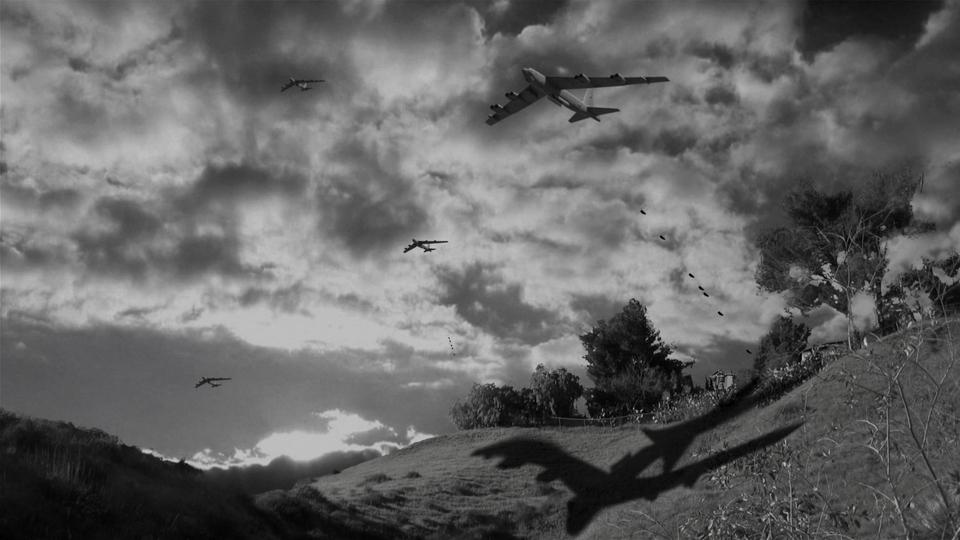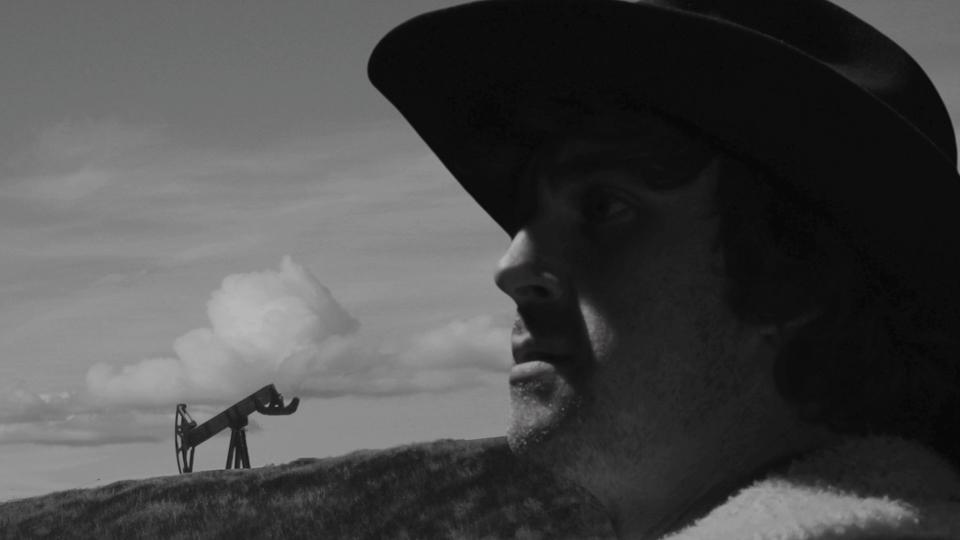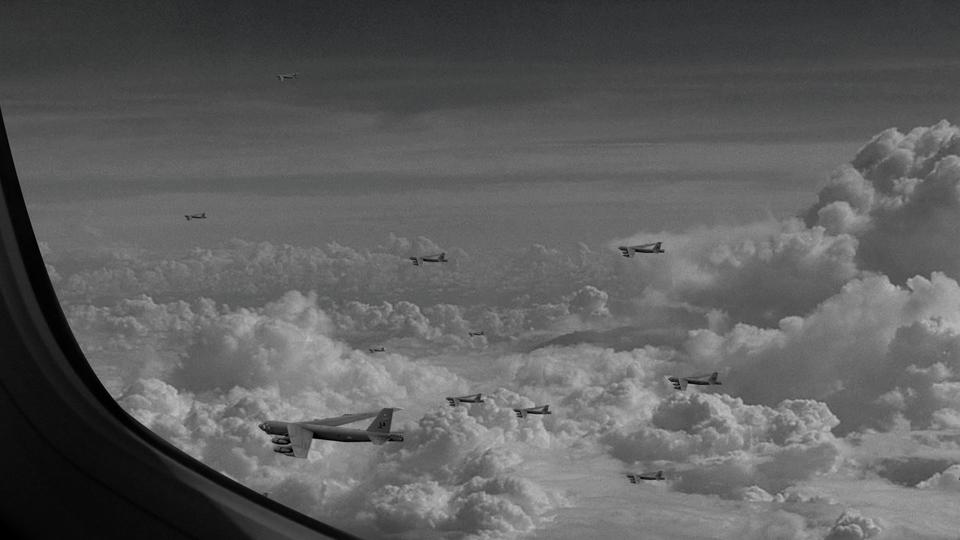Strange Love
Idylls that hold some irritation in store: Richard Wilhelmer´s Strange Love (produced at the California Institute of the Arts) shows them to us, implying our agreement that seeing irritations in all idyllic views is now normal. Gloomy idylls have come to represent familiar, popular and easily comprehended idyllic scenes. You can never tell, even more so.
A golf course glows in black and white and the evening sun; a siren wails; the camera pans to the sky. At that moment a single jet appears in the frame, seemingly a coincidence at first. Then, when the sky fills with them, the situation becomes clear: It´s war. To be precise, a scene of war. This is made even clearer when closeups of all the B-52 bombers are shown in a scene probably taken from the classic film that the title and lettering style refer to. Everything´s familiar, but: A Stealth bomber´s flying in the center of this all too idyllic formation of jets, a model that didn´t exist in the days of Kubrick´s Dr. Strangelove.
The scene looks as if it were made by Kubrick, the song about "fact, fiction, contradiction" could be Klaus Nomi´s. The voiceover doesn´t sound like it, but it´s James Benning (a filmmaker who dealt with skies, landscapes and everyday irritations). "I love you like I love the bomb," he says: Two young Yanks, a man and a woman, fuck as bombs fall on hills in the background.
Kubrick´s view of the relationship between technology and sex was the other way around: I love the bomb like I love you. Yesterday´s "strange love" is the idyll of today. And Strange Love meets this with the strangely normal love known as nostalgia/cinephilia, in self-annulment mode. Sex with the technology of death, rune of peace, mushroom-cloud apocalypse: The Cold War´s visual culture points to our present day. All war tends to be a well-tempered police action now. And the US Air Force bombs America.
(Drehli Robnik)
Translation: Steve Wilder
Strange Love
2010
Austria, USA
5 min



